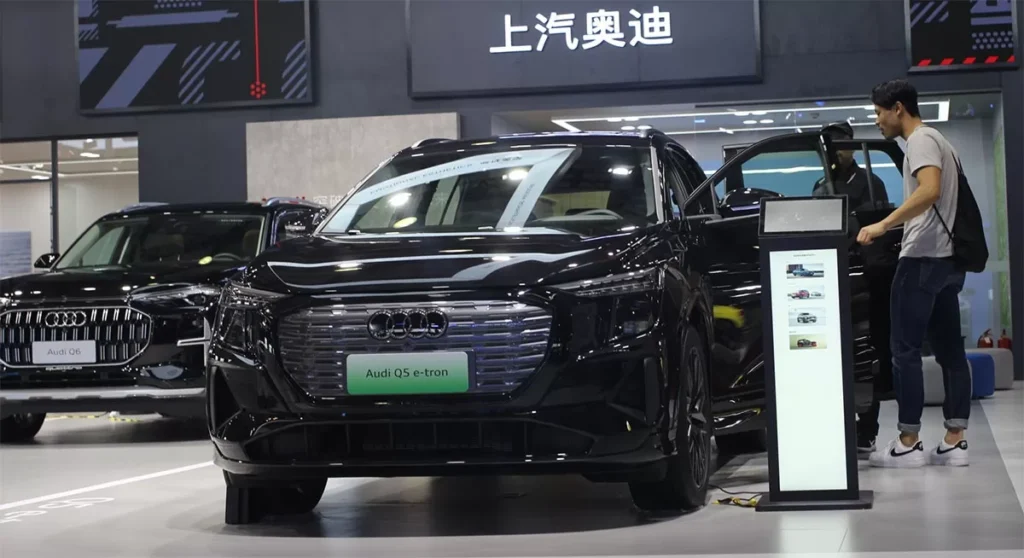In a significant shift, Audi’s new electric vehicle (EV) series, developed specifically for the Chinese market, will not feature the brand’s iconic four-ring logo, according to two insiders familiar with the plans. This strategic decision by the premium marque, owned by Germany’s Volkswagen Group, is attributed to “brand image consideration,” one insider revealed. The move reflects Audi’s effort to adapt to the local market dynamics and highlights the collaborative automotive architecture co-developed with Chinese partner SAIC Motor Corporation. Additionally, it underscores an increased reliance on local suppliers and technologies to enhance market resonance and integration. The new EV series, internally codenamed “Purple,” represents a tailored approach to capture the unique preferences of Chinese consumers. While it remains unclear whether the vehicles will adopt a different logo or simply carry the Audi name, the decision signals a significant departure from Audi’s traditional branding strategy.

Changing Gears: Audi Unveils New China-Exclusive EV Line Without Iconic Branding
This adaptation aims to foster a stronger connection with the Chinese market, which plays a critical role in Audi’s global growth strategy. Scheduled for a concept car unveiling in November, the Purple series will also see Audi unveiling the series’ “brand story.”
This event will offer deeper insights into the rationale behind this branding shift and how it aligns with Audi’s broader strategic objectives. The emphasis on local market alignment is crucial as China stands as the world’s largest auto market, where consumer preferences and technological advancements drive competitive differentiation. By 2030, Audi plans to introduce nine models under the Purple series, positioning itself to capture a significant share of China’s burgeoning EV sector. The shift in branding strategy is part of a larger trend among global automakers, who increasingly tailor their products and brand identities to resonate with regional markets. This strategy not only enhances brand appeal but also leverages the strengths of local technologies and suppliers, ensuring that the vehicles meet local expectations and standards. The collaboration with SAIC and the reliance on local suppliers are strategic moves to streamline production processes and reduce costs while boosting market appeal. This approach enables Audi to harness local innovation, making the vehicles more relevant and appealing to Chinese consumers. The adoption of local technologies ensures that the new series integrates the latest advancements and meets the specific needs and preferences of the market. The November unveiling will be a critical milestone for Audi, showcasing its commitment to innovation and market adaptation. The concept car will highlight Audi’s design excellence and technological prowess, setting the stage for its future in the Chinese market. The “brand story” will likely emphasize the fusion of German engineering precision with Chinese technological innovation, crafting a narrative that resonates with both local and global audiences.
Audi’s Bold Move: New China EV Series Ditches Classic Four-Ring Logo
This strategic branding move by Audi reflects a broader industry trend where global automakers are increasingly focusing on regional customization to enhance market penetration. The success of such localized strategies will be closely monitored as other manufacturers navigate the complexities of balancing global brand integrity with local market relevance. In summary, Audi’s decision to forgo its iconic four-ring logo on the new China-only EV series marks a bold and strategic departure from its traditional branding. Driven by brand image considerations and a deep integration with local technologies, this move highlights the importance of market-specific strategies in the automotive industry. The upcoming unveiling of the Purple series in November will be pivotal, setting the tone for Audi’s future in China’s competitive EV market and demonstrating the brand’s adaptability and commitment to innovation.